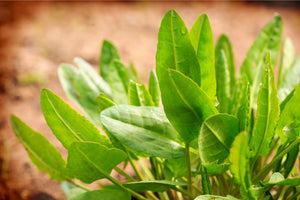Welcome Fall! 10 Easy Checklist Items for Late Summer Garden Cleanup
Seasonal gardeningIn late summer your garden may be looking a bit overgrown and tired. But don't worry—this is the perfect time to give it the TLC it needs to thrive into the next season. Our late summer garden cleanup checklist will help you get your garden back in shape. From removing spent plants to prepping your soil for future growth, these essential tasks will ensure your garden remains healthy and productive.

Goodbye Summer, Hello Autumn!
Taking the time to do some maintenance and cleanup from season to season is an important step no gardener should skip. Summer fades into Fall at different rates around the country, so timing varies, but the principles are the same.
End of Season Summer Garden Cleanup Checklist
What kind of end-of-season maintenance does your garden need? Use this checklist to keep track:
1 - Remove Spent Plants
It’s important to do a thorough job of clearing out the vegetable garden. Annuals that are finished for the season should be cleared as soon as possible. Plant diseases get into the soil and can cause headaches later, so it’s especially important to remove tomatoes and anything diseased. Start a compost pile if you don’t already have one and compost dead plants. Compost healthy plants that are at the end of their cycle. Don’t even try to compost anything suspicious. Just send it out with the trash.

2 - Weed Control
Clear out weeds before they go to seed. You can take a look at our favorite weeding tools.
3 - Pruning and Trimming
Trimming and pruning perennials will not only clean up your garden and make it look better, but it can also reinvigorate plants. Depending on the variety, it can also be a good time to divide if the plants have gone dormant.

4 - Soil Preparation
Autumn is the best time to replenish the soil for a healthy garden. Weed the area well so that no competition gets established over the winter. Mix in shredded leaves, compost, or rotted manure to enrich the soil.
5 - Tool Maintenance
Take care of your garden tools and do a general tidy-up of your storage areas. Sharpen clippers, pull up tomato stakes and plant supports, and drain and put away your hoses. There’s nothing quite so frustrating as having last year’s maintenance to do or needing to replace items that were destroyed because they weren’t cleaned and properly stored. It’s much more fun to focus your time and energy on starting your seeds than doing last season’s work.

6 - Organize Garden Supplies
Now is the time to clean empty flower pots and seed-starting equipment. If it's all ready to go for the next season it gets you growing faster. Also, take stock of your plant supports. If yours didn't last through the season, you might want to try making our ultimate tomato cages.

7 - Save Seeds for Next Year
You probably have some plants that are still happily producing, and obviously, you don’t want to remove them in the middle of a great harvest. But, if you’ve got any plants you want to save seeds from, quit deadheading them or harvesting them and allow them to begin concentrating their energy on seed production now. And be sure to allow wildflowers and native plants to continue their autumn cycle. This can give your plants a chance to self-sow and feed your local birds and friendly pollinators.
8 - Plant Cover Crops
If you’re not using the land over the next season, plant a cover crop like clover that can be turned under as green manure later. Covering the soil with organic mulch protects it from winter weather and will gradually add organic material as the mulch breaks down.

9 - Water Systems
Take a look at your watering systems and make any needed repairs or adjustments. Hoses can take a beating in the summer sun, so check for leaks. Fall can be a good time for off-season sales.
10 - Plan for Next Season
Make notes in your garden journal about what went well and what you want to do next year. Take stock of what seeds you have and look at varieties to try.
And, of course, as always, enjoy the satisfaction of a job well done. A new season is right around the corner, and you’ve set yourself up for success by closing this one out thoughtfully.
Why should I clean my garden up after the Summer season?
Here are some important reasons to take the time to do some end-of-season cleanup:
- Removing old plant material helps to prevent diseases and discourage pests.
- You’ll be less likely to feel overwhelmed with old messes when it’s time to plant new seeds.
- Weeding and mulching prevent weeds from becoming established during the off-season.
- Saving seeds from your best plants can help you to be more successful in future seasons.
- Cover crops and soil replenishment help to build better soil quality.
- You’ll save money on repairs and more with some simple maintenance.
Popular Posts
-

Say Goodbye to Leggy Seedlings: 5 Things to Check
-

Easy Guide to Growing Sorrel from Seed – Annual or Perennial Success






Leave a comment